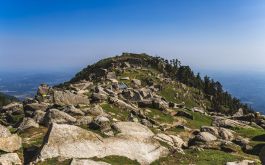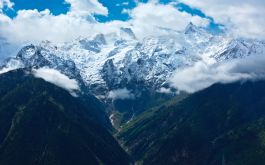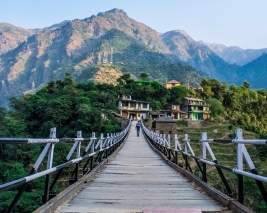Punjab: Sunshine State
A vast land unfolds – full of lush fields swaying in the wind. A temple glows golden, matching the sun in all its radiance. Vast forts stand, as proud purveyors of history. A plate overflows with rich cuisine and spirals of tantalising steam. Five rivers slink their way across the length of the land. People celebrate harder here. Smile wider. Laugh louder. This is Punjab – where everything is more than you’ve ever expected.
| Punjab: A Quick View of the state |
| Capital |
Chandigarh |
| Official Language |
Punjabi |
| Dial Code |
Chandigarh (172) |
| Population |
30.1688 million (as of 2018) |
| Currency |
Indian Rupee (INR) |
| Time Zone |
UTC+05:30 (IST) |
| Area |
50,362 square kilometers |
Highlights
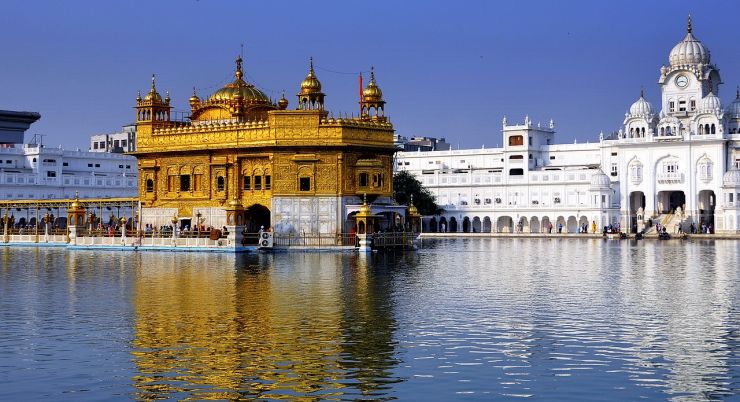
Places of Worship: Located in Amritsar, blessed with the brilliance of gold, known as the “abode of god” and the “exalted holy court… could we be discussing anything other than the Golden Temple? If your soul is seeking spiritual enlightenment, then a visit to this iconic temple is a must. However, Punjab is choc full of places to worship. You can also visit the Jayanti Devi Temple, Mata Mansa Devi Temple, Gurdwara Maji Sahib, Akal Takht, the Rauza Sharif Mosque, Minar-i-Qadian, Imam Nasir Masjid and more.
Wildlife
Beloved for its fields, rivers and natural bounty, Punjab is home to some incredible wildlife, and by extension, wildlife sanctuaries. A large part of the biodiversity of the state is located in the Shivalik region. Over here, otters, elephants, river dolphins, black bears, the royal Bengal tiger and deer can be spotted by the keen eye. Witness the variety of Punjab’s wildlife by visiting sanctuaries like Abohar, Harike, Jhajjar Bacholi, Bir Moti Bagh and Bir Bhadson.
Cities
You’ll need to carve a significant amount of time to explore all the cities of Punjab. Each is a melting pot of different cultures and faiths. Each is a busy hub, packed with all the modern conveniences. Within the confines of each city, you’ll taste the spice of Punjab – that elusive element that makes Punjabi cities like no other in the country. Explore the stunning and fresh beauty of the planned city of Chandigarh. Awaken your spiritual side in the beauty of Amritsar’s temples. Immerse yourself in the rhythms of the busy Ludhiana streets. Feel the weight of history and heritage at Bhatinda.
Iconic Locations
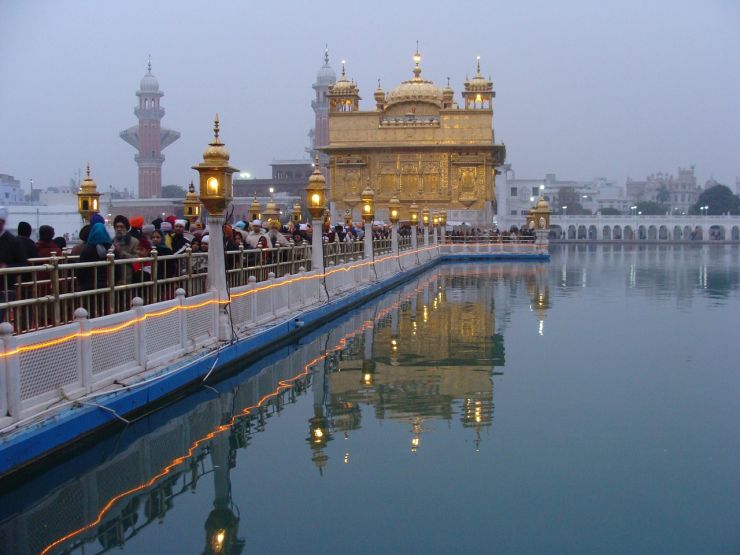
Punjab is a treasure chest of places to visit. Visit the Wagah border and Jallianwala Baug in Amritsar for a sense of history and perspective. Chhatbir Zoo and butterfly park in Chandigarh. The Wonderland theme park and St. Mary’s Cathedral Church in Jalandar. The iconic Lodhi fort and the Rural Heritage Museum in Ludhiana. Qila Mubarak, Rose Garden and Bhatinda fort in Bhatinda… and even with these recommendations, we’ve barely scratched the surface.
Cuisine
Punjab is almost a sensory overload. It engages sight, sound, smell, touch, and last but not the least, taste. Punjabi cuisine – beloved by vegetarians and nonvegetarians alike – attracts tourists from all corners of the globe. Rich buttery flavours, fresh grains and the iconic tandoori style of cooking – is your mouth watering? Well, sate that appetite with the best dishes of the state, like Butter Chicken, Sarson Ka Saag aur Makki Ki Roti, Chole Bhature, Dal Makhani, Machchli Amritsari, Punjabi Kadhi Pakora, Amritsari Kulcha… the list is endless.
Interesting facts about Punjab: State Secrets
- The name Punjab is derived from two Persian words. Punj – five and aab – water. This refers to its unofficial title “the land of five rivers” (Ravi, Beas, Chenab, Sutlej and Jhelum).
- Punjab is an ancient seat of learning – the oldest university in India, named Taxila is found here.
- The Golden Temple is the most visited place in the world.
- Punjab is home to the largest number of rolling steel mill plants and is referred to as “Steel Town”.
- The state is blessed with abundant, fertile soil, which produces 19 % of India’s wheat, 11 % of India’s rice, and 10.26% of India’s cotton. It is known as India’s Bread Basket and India’s Granary.
Location: Brothers Across Borders
Punjab is wrapped in the embrace of many borders. Jammu and Kashmir wing their way north from Punjab. Haryana holds on to the border in the south and southeast. Rajasthan; remains (as always) in the southwest and Himachal Pradesh hugs Punjab’s northeast border.
Click here to view Punjab on Google Map
Timings: Best Time to Visit
Winter winds its way across the land from October onwards. Temperatures drop to 26 degrees Celsius during the day and slide down to 0 degrees Celsius at night. This pleasant weather lasts all the way till March and makes for an ideal time to peer into Punjab’s corners - you can explore all the famous tourists’ spots and avoid the scorch of summer.
When summer does arrive, though, the maximum temperatures can hit 45 degrees Celsius. It is advised not to travel or wander around the sun in these temperatures. Luckily, the monsoon brings sheets of rain in July that continues to cover the land till September. The weather stays wet and humid throughout the season and it is advised not to travel too strenuously across the state. However, for those fresh lungsful of crisp rain-tinged air and lush green surroundings, Punjab in the monsoon is perfection.
How to get to Punjab: Way to Wonderland
By Air: Punjab is a generous state, and that extends to its airports. Chandigarh, Amritsar, Bathinda, Pathankot, Patiala and Sahnewal all host airports that are connected to the rest of the country. However, only Amritsar and Chandigarh have international airports. All domestic carriers fly to Punjab’s airports, while international airlines like Turkmenistan airlines, Uzbekistan airlines connect it to the outside world.
By Rail: Punjab is home to over 90 railway stations spread across the various districts. Trains allow passengers to reach more specific locations in the state and are a budget friendly option. A variety of trains operate from Punjab’s different stations, including Amritsar Shatabdi, Shan-e-Punjab, Swarna Shatabdi, Garib Rath Express, Golden Temple Mail, Punjab Mail and others. It seems that all rails really do roll their way to Punjab.
By Road: The roads to Punjab are flanked by stunning vistas of long rolling plains and lush green fields waving gently in the breeze. 1485 kms of the State Highway and 1729 km of National Highways wind their way across the state. The Grand Trunk Road, or NH1, links Punjab to North as well as East India. Tourists can either drive down themselves or choose between government and private buses.
History: Plunder and Partition
The Katoch Kings, who ruled Punjab at the time of the Mahabharata, referred to the state by a long-forgotten name: Trigarta. The Vedic Civilisation spread its influence in the north all the way to Punjab, which forever altered the culture of Punjab and surrounding states. Following this, many ancient empires found their home in Punjab – namely, Gandhara, Nandas, Mauryas, Shungas, Kushans, Guptas, Palas, Gurjara Pratiharas and Hindu Shahis. Punjab has also been invaded by Alexander the Great in 330 BCE and was also home to the Mongol Empire.
The state is the birthplace of Sikhism and the Sikh Confederacy was formed when the Mughal Empire fell. The Confederacy was united to create the Sikh Empire by Maharaja Ranjit Singh. In 1849, the East India Company annexed the entire Punjab region from the Sikh empire.
1947 marks a landmark in the states’ history when Punjab was partitioned into the West and the East, along religious lines. The East stayed in India, while the West went to Pakistan. From Punjab’s bounty, Haryana and Himachal were carved out to create three distinct states that we know and love today.























